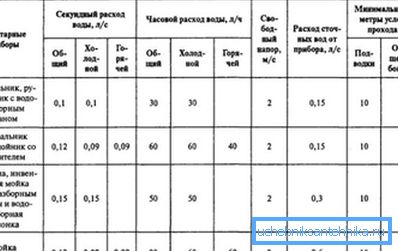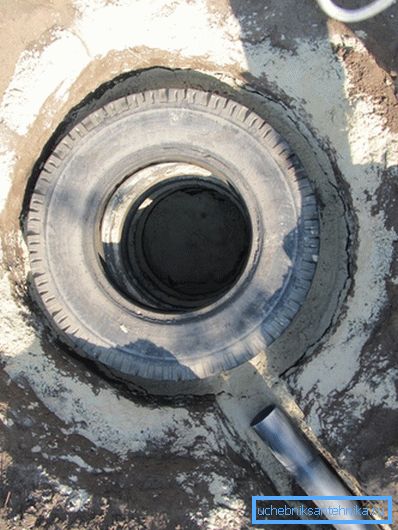Sewerage do-it-yourself: we build local sewage treatment
What can a sewage system be built with? Is it difficult to organize full or partial disposal of wastewater where there is no common sewer system? What materials and design solutions can be used? Let's figure it out.

Allow me to present: septic
But you, dear reader, history first hand.
A couple of years ago, the author of these lines bought a house. Beautiful, cozy, with an excellent view from the windows, but at a considerable distance from the nearest sewer well.
The problem of waste disposal was solved by the previous owner in the least costly way at the construction stage: a foundation pit with concrete walls and a partially perforated bottom was opened in the courtyard. The bottom was rather silted, so a smaller part of the water was filtered into sandy soil, most of it needed to be forcedly disposed of.
Note: pollution of groundwater with unpurified runoff is illegal and punishable. This fact did not add enthusiasm either.
The cost of calling a sewage truck turned out to be quite significant: getting rid of a cubic meter of wastewater was exactly 10 times more expensive than getting a cube of clean drinking water. Indeed, the cesspit or sewer pit is easy to build with your own hands; however, at the stage of operation, it is by no means cheap.
The solution was found pretty quickly. They became a septic tank: the former pit after clearing from silt turned into a filtering well; the sump capacity was installed in the sewer rupture. For the past year since the installation, the need for disposal has not arisen; I think that the sump will require cleaning in two or three years.
Are you intrigued? Then let's go back a little and get acquainted with the device septic tank.

Principle of operation
The principle of gravitational separation of wastewater is the basis of the work of the simplest single-chamber septic tank.
Behind loud and incomprehensible words, a very simple mechanism is hidden:
- Wastewater enters the tank, the size of which prevents significant disturbances in the contents. There they are settled: mists settle on the bottom in the form of silt; light fractions are collected on the surface. Relatively clear water remains in the middle.
- Through a special form of overflow, which draws water below the surface, the settled water enters the soil after-treatment. Simply put - it is absorbed into the soil at a certain depth, thereby preventing the spread of odors. For this purpose, a filter well or filtration field is constructed.
Since drains are 98–99% water, cleaning the sump is rarely required. When this moment comes, you can use the services of vacuum trucks, or you can independently reload its contents into the compost pit and, after processing, be used as fertilizer.

Payment
To build a sewage system with your own hands, you need to know the dimensions of the future structure.
Which parameters are important to us?
- The capacity of the sump.
- Wetted soil surface in a well or filtration field.
Sump
The information we are interested in is contained in SNiP 2.04.03-85, which regulates the construction of sewer networks. The minimum volume depends on the average daily volume of wastewater.
| Average daily volume of waste, m3 | The minimum volume of the septic tank (sedimentation tanks) septic tank |
| Less than 5 | 3 daily volumes of waste |
| 5 or more | 2.5 daily volume of waste |
Where to get this same volume?
If you have a water meter installed, everything is simple: the amount of wastewater will correspond with minimal error to the change in its readings for the reporting period.
In the absence of a metering device, it is necessary to proceed from sanitary norms, according to which water consumption is estimated at 200 liters per day per family member.

By the way: adjustment of tanks and compulsory restriction of pressure in mixers without compromising comfort reduce water consumption by half.
So, for a family of two people a reasonable minimum volume of the settling tank will be 200x2x3 = 1200 l.
Utilization of treated wastewater
For a filtering well or filtration field, it is not the volume that is important, but the area of the absorbing surface. It is determined by the type of soil:
| Priming | Absorption, l / day |
| Clay | 10-12 |
| Loam | 20-25 |
| Sugar | 40-60 |
| Sand | 80-100 |
Since the water will wet not only the bottom, but also the walls, when filling a well or a trench, their area is also taken into account. So, for a daily volume of 400 liters of wastewater on sandy soils, an absorbing surface of approximately 400/50 = 8 m2 is necessary, which corresponds to a cubic trench filled with water with a wall length of 1.26 m.

General moments
A number of technical problems and their solutions will be common to any septic tank design.
- The overflow in the sump is usually a vertically oriented tee. The lower drainage takes water below the surface, preventing the crust from entering the overflow; the top outlet serves for ventilation of the filter well and cleaning.
- Instructions on the organization of ventilation, by the way, are utterly simple: it is enough to remove the vent to the roof from the top of the sewer system and provide it with a deflector.

- And durability, and the price of plastic sewer pipes do not leave pig-iron any chances. The only advantage of cast iron - mechanical strength - is in demand only when laying the pipe without a tray under a busy road.
- For cutting plastic pipes, you can use a hacksaw for metal or, more conveniently, a grinder with a cutting wheel for metal or stone.
- After cutting at the site, the assembly of sewage pipes with their own hands begins with chamfering from inside and outside. The outer chamfer will facilitate the connection; inside you need to remove burrs, which subsequently can cause permanent blockages.
- The slope for the most common type of sewage - 110 mm - is 2 cm per linear meter. Both increasing and decreasing the slope will increase the likelihood of blockages.
- The minimum distance from the foundation to the settler, incorporated in the already mentioned SNiP 2.04.03-85, is 5 meters. The filtering well should be removed from the house by 8 m, the field of underground filtration - by 15.
- Pipes and tanks are laid below the level of soil freezing.
It is useful: where it is impossible, the heating cable saves the situation. Better - self-regulating: reducing power in the absence of frost, it provides a very real power savings.

Materials
The traditional solution for a septic tank is a specialized polyethylene container. Along with it, a thinner and, accordingly, cheap tank for drinking water can be used. This is the way the author went.
What else can be used in construction?
Let's give some examples.
- Sewage from the barrels with their own hands is constructed mainly in the country, where the daily volume of waste is very small. Two or three barrels are connected in series; Silicone sealant is used to seal their pipe joints.
The last of the barrels is set bottom up on the bedding made of rubble and becomes a filtering well. The backfill of this barrel is performed by the same gravel, which provides effective drainage.

- The sewage system from eurocubes is self-assembled in the same way.. Nuance: the mass of the soil can crush thin plastic Eurocube when backfilling. The problem is solved by using for filling sand-cement mixture in a ratio of 1: 5; containers are filled with water filled with layer-by-layer ramming.
Grasping when moistened, a mixture of sand and cement forms a strong sarcophagus around the settling basins.
- Sewage of tires with his own hands is, to be exact, not a septic tank entirely, but a filter well. Old tires do not allow to crumble soil walls.

Conclusion
We have listed only a small part of the possible solutions. If you have basic building skills, you can build a septic tank literally from any available materials - there would be a desire.
The reader will find some interesting ideas in the video in this article.
Successes!